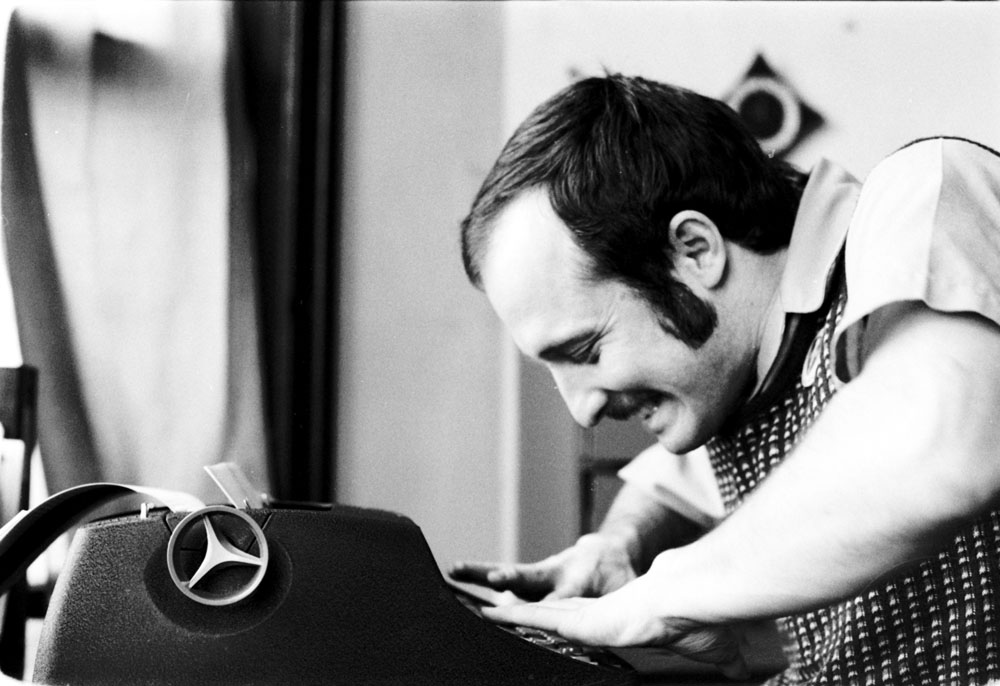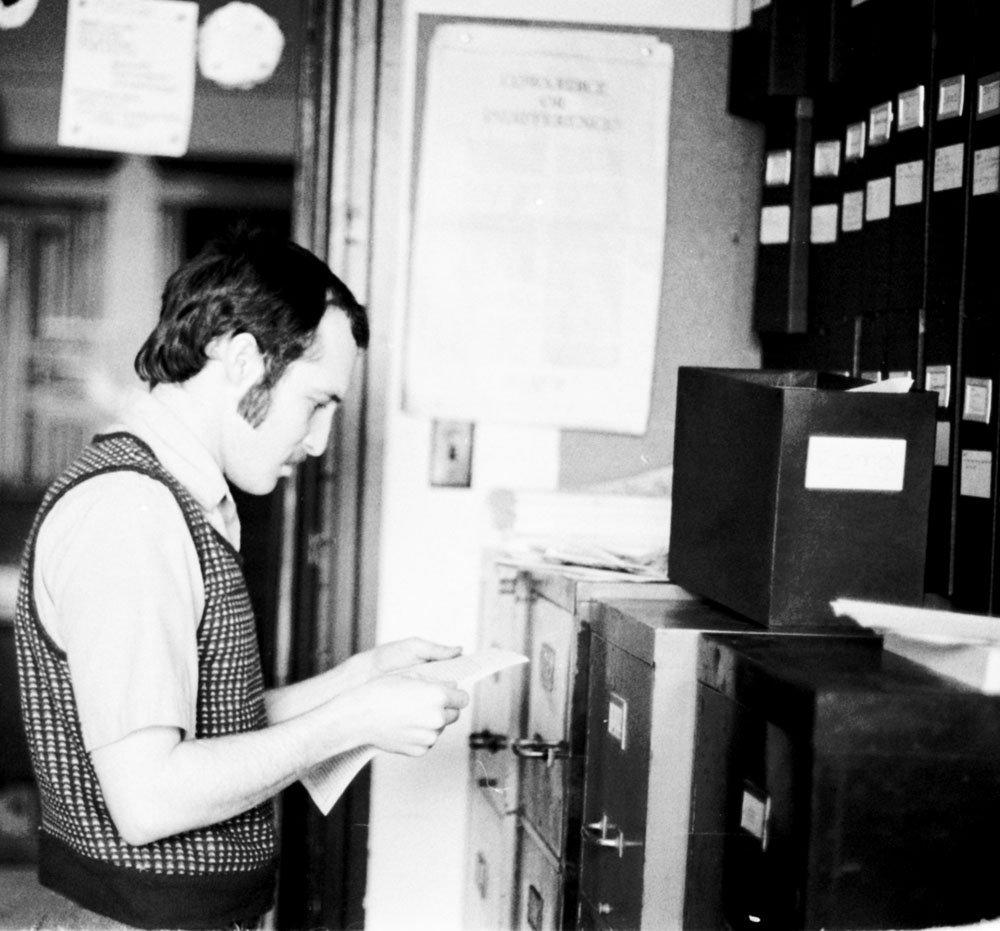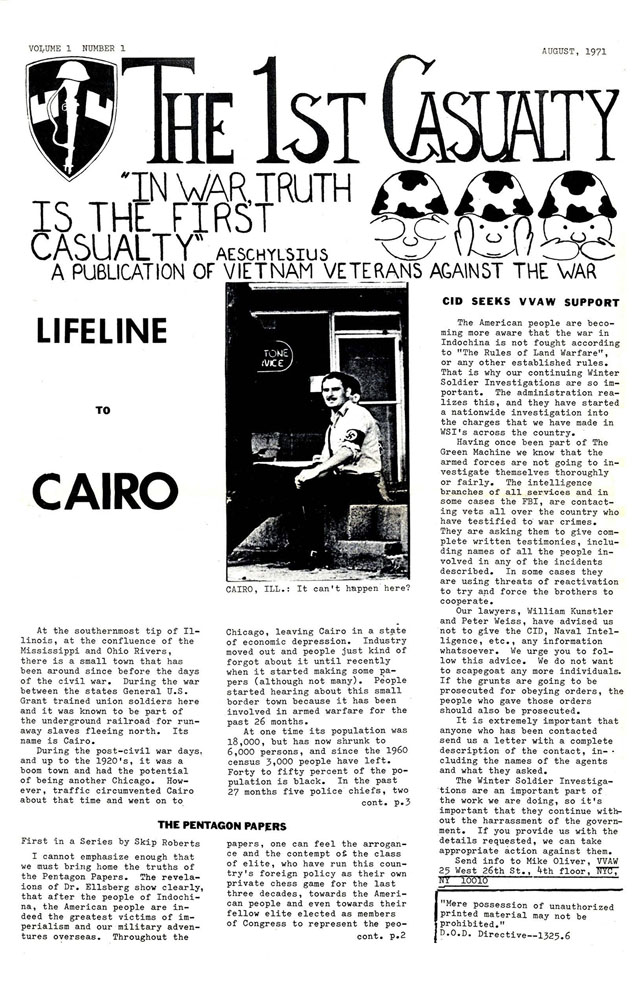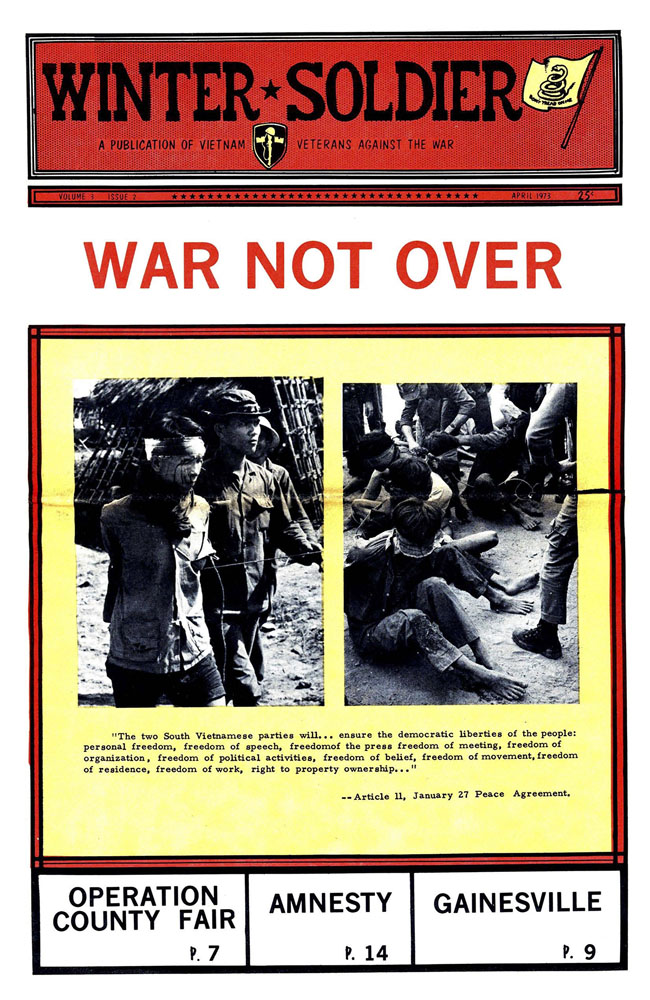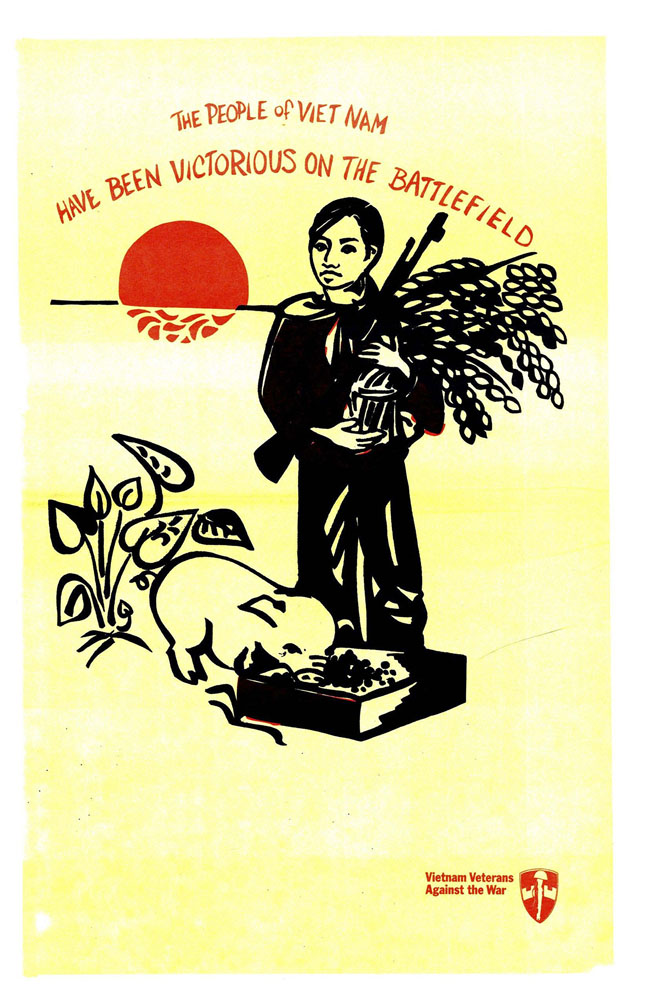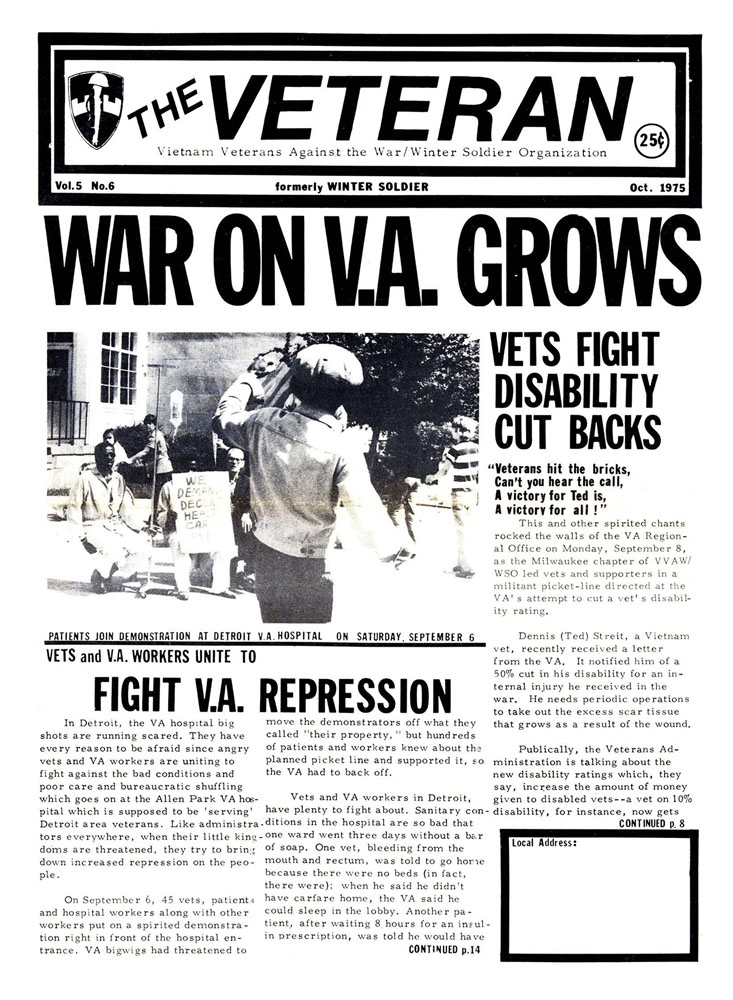 |
The History of VVAW National NewspapersBy Barry RomoIn your hands is Volume 50 of VVAW's national newspaper, The Veteran. It started off as First Casualty, then Winter Soldier, and then became The Veteran. We decided to look back at the early days of VVAW's newspapers and get memories from some of the key organizers who worked on the paper over the years. See page 11 for recollections by Pete Zastrow and next issue for memories from Ed Damato and Bill Shunas. I started working on the paper in 1972, when I got elected to the VVAW National Office. It was still called First Casualty. Prior to that, my local chapter and regional people published GI newspapers. In San Bernardino we organized GIs from 29 Palms Marine Base, March Air Force Base (B-52 Base) and so had a little experience already in publishing a newspaper. The GI papers weren't chicken shit papers. The bases had military papers by Airmen and GI's and Marines, things like the March Beacon. The anti-war GI paper was called the March Bacon. We waited until the printed the Beacon. We would then get that and rush back and put our anti-war GI newspaper inside of the Beacon. Then we would drop it off every place where you could pick it up. 29 Palms, was the same way. There were tons of other places doing GI papers, not just there. The printers started showing us more ways to improve our papers. They would tell us things we could do. Cut out blue space, use blue pencil. Then use a semi slide rule that they would have. Turn it around, so you'll have both black background and white. And stuff like that. I think they were sympathetic. This is when I started to do layout. I did that for a year or two. Then I was elected to the VVAW National Office. They knew I had newspaper experience. A couple issues of the First Casualty had already come out before I got onboard. One of the issues had a note back from a GI saying "I want to join." We mailed a thing back to him saying, here… And the company clerk sent a note back, saying he had died. He was killed in combat. We didn't have a national newspaper from 1967 to 1971. I'm sure, money and I'm sure numbers of people were some of the reasons why. You have to reach a certain level of membership and money, before you can launch a national newspaper. I mean these cost money. I think, at the time, I was getting $115 for going to school on the GI Bill. I think they raised it to like $150 a month. So, most of us worked jobs, like washing trucks and cars.
After we did Dewey Canyon III and the Winter Soldier Investigation, we found a national audience. Everybody had their own papers; Chicano Rights people, Black Panthers, etc. That was what people wanted. They wanted something that was national, that local people could connect to. We would print articles in the paper that were topical. California had our own paper, Different Sons. I think New York did as well. But, for the most part, people didn't have local papers. That became a giant thing. National meetings, people would say, over and over "We want a national paper and we are electing you to the National Office specifically to get out a national paper." The National Office was still in Manhattan. I lived there for a while, on and off. I was living there half the time behind my desk, in the office. You know, we were getting $25 bucks a week to live on. And then, I was sent down to Miami to organize for the Conventions. So, that took up more time than I spent in Manhattan. But, it was cool. I liked it. We liked it. That became a big thing, to get out a newspaper. And then we moved the National Office. People said also you got to move the NO. It's got to come to the Midwest. So, we checked out St. Louis and we checked out Detroit, and we checked out Chicago. Chicago was the Second City, it had gigantic steel mills and auto plants, and everything. Besides, it had Panthers. And it had Rising up Angry; people who were organizing white youth to be anti-racist and stuff. The move to Chicago happened in 1973. The paper played a gigantic role in organizing. You could look and there would be 50 addresses of all the Regional Coordinators. It would give both the breadth of the thing. We had overseas GI projects and stuff. When we moved to Chicago, I had never done color. In California, everything was black and white, or reverse stuff, negatives and stuff. We knew how to do that. We knew how to size up photographs and stuff. The presses even let us use their gigantic wax machines. We could use glue sticks, but we put most of them together at the printers. We were distributing the paper by mailing to Regional Coordinators, not individuals. I want to say, 20,000 to 25,000 issues at the time. We would bundle them up and ship them at the Post Office, gigantic bundles. I think we only asked for donations. I mean like in California, we used to have selling contests, who could sell the most papers. So, we would go to the steel mill where we would have members that were also union members as well, so we would sell them. Actually, I won bunches of those, especially at the Unemployment Office. It was great because here would be GIs, who were out of the service now. They would give you a quarter. It may sound like not a lot. But it fuckin is! Then the name changed from First Casualty to Winter Soldier. I think to emphasize that we were forward thinking, the same way we added Winter Soldier to the name Vietnam Vets Against the War at the same time. The change happened in Chicago; the change happened in 1973. In Chicago well, I came here and became friends with people. Became friends with Rising Up Angry people. Became friends with Panthers. Became friends with hippy dippy people printing… I want to say something like the Great Colored Buffoon or something like that. They would print in parts, so one part was with the colored paper, and they used twice as many colors. Then the second part, they would have to put it all together, was totally black and white. But they wanted the hippy colors. We wanted the colors because we were using the newspaper with posters and shit. So, we copied that from the Panthers and the Panther paper, and Rising Up Angry had cartoons, revolutionary cartoons. They showed us how to do colors. We got inspiration from the movement in Chicago, and they also helped out. They introduced us to the print shops they were using, which were already cheap. In the suburbs. Palos Hills was one, a printing place we used for over ten years. The National Office was living collectively at this time on Newport, just a couple of blocks from Wrigley Field. And then it was mostly Puerto Rican and other poor people. At this time, we upped the production to monthly. It was 25,000 copies. Most of the National Office collectively worked on the paper. There was a decision to not sign articles, no authorship - we said "it's a national paper." That was a cover for people who were sensitive and shit, and that we spoke with one voice. If we had two positions, then we would print two different positions from the group and us. Production wise, at this point I am doing a lot of the layout, No writing. Except the one article about my trip back to Vietnam, they made me write it. The very first trip. I wrote, the first time I understood what Imperialism was. I didn't see any Chinese people, except at the embassy. There weren't prostitutes and people running around and their kids were fighting back and they were fighting back.
The collective determined the content. We would talk it over and sometimes people wouldn't care, and sometimes they would. And I was sort of layout editor, so I could do whatever I wanted. Then the name changed to The Veteran. We had some problems with people who didn't want us to be a veteran's organization. In fact, they said it was shoring up Imperialism, if we got these benefits for vets. And so, we decided we wanted to more directly hook back up to veterans, especially, after the war was basically over, to show sort of a break. We still recognized all the women, so Annie Bailey was Regional Coordinator and stuff like that. It was to re-emphasize our vet connection, we had War on the VA and stuff. The name Winter Soldier coexisted with the time Winter Soldier was the sub-group or sub-name of VVAW. So, when that changed, it became The Veteran. Also, it went from monthly to semi-monthly, then quarterly, and eventually twice a year. The color went away as well, with The Veteran. We stopped it. People like Jim Duffy just made hilarious jokes, like "I really want to thank you for dropping the use of colors. They used to always come off on my fish, when I was buying at the market." So, with wonderful support like that … In the Winter Soldier era, Carol from California made the color posters. So, we would have a meeting and discuss, for instance Women's Day, and we would say, well, we want a poster about Women's Day or GI Counseling or A Single Discharge or other issues. We also printed out bunches of them as posters. So, for instance "The Vietnamese have been victorious on the battlefield" and "Solidarity with the Cambodian people." We did, I think, bunches of those. But, I mean, we also laid the paper out so the centerfold and the posters could be done by themselves. So, people in offices and shit would just put them up in the windows, whether they were doing GI counseling or GI organizing or stuff like that, or PTSD. Distribution wise, at the peak of the 25,000, it went to the chapters. And some to individuals. But, as we got bigger, we did mailings to the people who gave money to us. So, if somebody joined when they were in Vietnam or somewhere else, we would mail those to them. We had a bunch of layout stuff at the National Office on Newport. I mean we had giant light tables and shit. The printer would deal with the photos. We would have to give them the percentages. And so, if it was 90%, you had to have on the back of it "page 15 - 90%" and we would have to put a blue spot in it. Pete Zastrow maintained the mailing list. The National Office moved in 1975 to the South Side of Chicago. The printing stuff moved there. And the darkroom and stuff. We had our very own darkroom, at both places, upstairs when we were on Newport. And so, in one of the kitchens Brian Adams made a darkroom. The photographers around Winter Soldier were Brian Adams and Damato. Ed was a great one. Brian was so good, he was able to open his own photo studio, after leaving the National Office. When we were producing the paper on the South Side. It was being printed in Palos Hills, a Chicago suburb. Pete Zastrow was part of the National Office and at a certain point, Pete started writing most of the articles. And I was doing the layout. Charlie, Bill Shunas, Bill Davis, Bill Branson were all working on the paper. I was living there with Pete, Bill Davis, and others. Everybody was working on the paper, at this point, and going to community college. This is where Bill and Bill became mechanics. They went to Kennedy King College In the 1980s, the 75th Street house went away. Then I did it on my table in our house on Marshfield. I left the collective house, when Alynne and I got married. We had a rental. I brought the light table with me. But the dark rooms got dismantled. We had one bedroom for us and one for VVAW. Pete was typing the articles, and maybe other people. I was doing Press Type for headlines. Cut and paste. At a certain point, we started using the computer to print those out. Alynne was doing that. But getting the articles, eventually, it came down to just me and Pete. And Bill Davis. Writing wise, the shift came in the later 80s, to get other voices in there. The switch went from, "this is just a National Office organ'" to be a broader VVAW and vets paper. In the 80s, we did stuff around Central America and centerfolds and pullouts. But, without colors and shit. Dewey Canyon IV, there was a pullout. And going to the Philippines, coming back and going to Vietnam and coming back. And then the Gulf War. And then in 1996, my PTSD prevented me from working on the paper. Jeff Machota came along and has kept it going since. He saved us. The paper is still important today because it is still the visual representation of who we are. It has carried through. Pretty fucking amazing. The paper represents a generation that fucking fought the good fight. Everything from Civil Rights to anti-war to anti-imperialist, not just anti-war. I mean we took a stand. We stood with people that were fighting. That's continuing. I'm amazed at the quality of writing that is still coming from Vietnam Vets. Books, yes, but articles, reviews. There is still something to be said, that needs to be said. Barry Romo lives in Chicago and has been a leader in VVAW since 1971.
|


